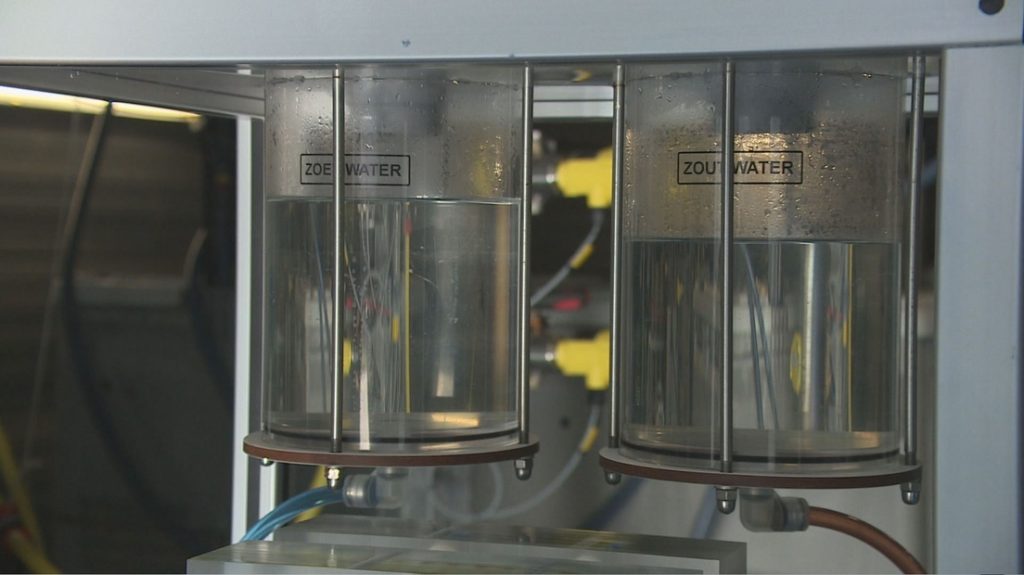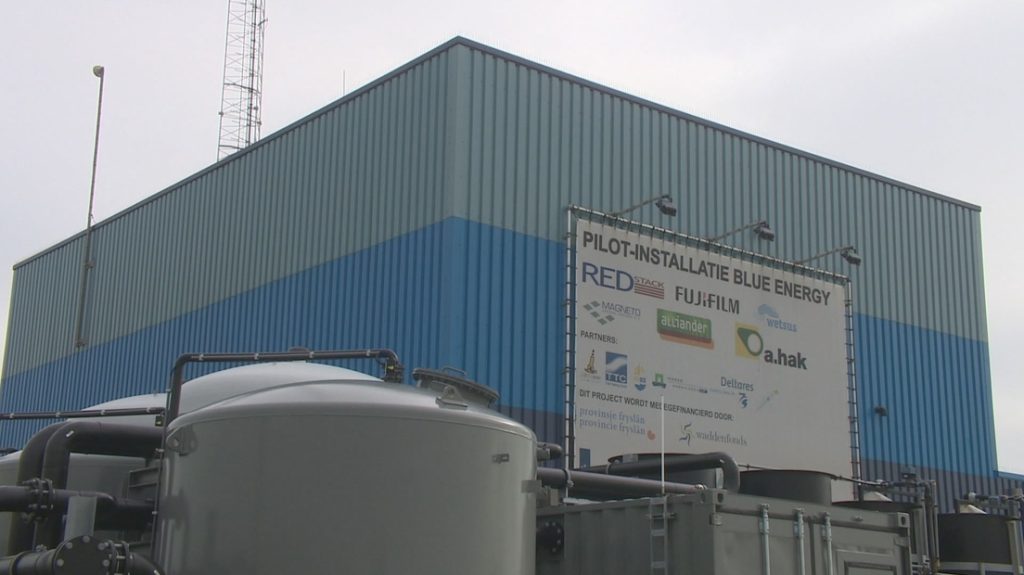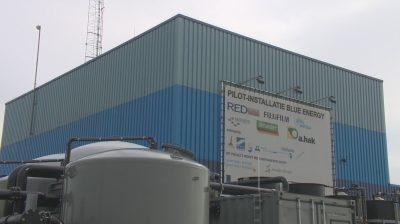The Wadden Fund is providing five million for a new power plant by the company REDstack on the Afsluitdijk. The new power plant is a follow-up to a trial to extract energy from mixing and then separating fresh and salt water.
The power that is generated has the name "blue energy. There has been an installation on the Afsluitdijk near Breezanddijk for some time. It is now being expanded. The aim is to show that it is possible to generate energy on a large scale near a vulnerable nature reserve. That should lure investors, REDstack director Rik Siebers hopes. "We want to show in this way that it works. That you can easily scale up."

REDstack has been working on power generation for years. Over the years they have had many setbacks in the pilot plant at Breezanddijk. For example, they had a lot of problems with algae growth. Siebers: "'Without problems' is always a difficult task. We learned a lot in this installation. For example, how to deal with algae or other organisms from the IJsselmeer or the Wadden Sea."
Energy enough for a small village
Through trial and error, they have now gotten the process under control. That means it can be scaled up. The new plant should generate 16.5 kW. "That's enough for a small village," Siebers says. That doesn't seem like much considering the ambition REDstack also previously expressed.
"We talked about a 200 megawatt power plant. We have recalculated that. The conclusion is that we can put a 100 megawatt system here. Nature and ecology here can take that well."
The latter is very important in a nature reserve. The plant's "waste stream" is taken to the Wadden Sea. This is brackish water, a mixture of fresh and salt water. That would be good for underwater nature and also the migration of fish. Research is being done to see if that is really the case.
"This technique could also be used at other companies on the Wadden Sea that take or return water. The damage there could be reduced," Siebers said.

With the subsidy and concrete expansion plans, Siebers and founder Pieter Hack's dream of making this a good sustainable and reliable source of energy is getting closer and closer.
"Yes, we want to turn the dream we see getting closer into reality. We really see it getting closer." So is the large installation generating 100 megawatts on the Afsluitdijk. "That could happen between 2030 and 2035. That depends on the financiers we can bring in."
The stacks and membranes that generate the energy are made at a factory in Sneek. Production will be expanded there in the near future. The entire investment comes to over 11 million euros.
